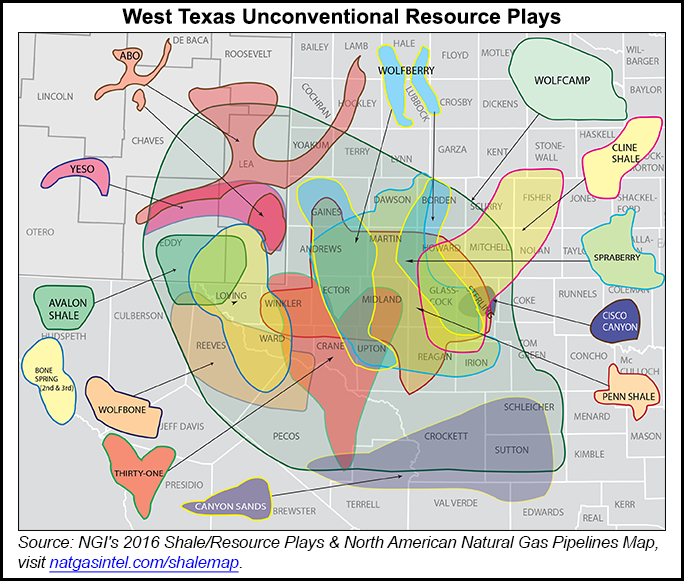Shale Daily | E&P | NGI All News Access | NGI The Weekly Gas Market Report | Permian Basin
Permian Basin JIP Digging In to Map Tight Formations
An industry-led project to combine new geological data in West Texas in the Permian Basin is set to launch in May.

Southwest Research Institute (SwRI), based in San Antonio, TX, said the first phase of the Permian Basin Joint Industry Project (JIP), which was introduced last year, would expand on initial investigations of deformation and mechanical stratigraphy in exposed strata in and around the Permian. Over the next two years, the consortium plans to combine new geological outcrop data with subsurface investigations, allowing members to make more informed decisions for oil production.
“With burgeoning activity focused on unconventional reservoirs, our investigations will provide data to help producers plan for the many complications in tight oil plays, which are regions controlled by the same geology,” said SwRI scientist David Ferrill.
The massive Permian, the most active oil play in North America, contains thicknesses of self-sourced reservoir strata with low permeability. Natural fractures improve extraction by providing permeability to and connectivity within the reservoir. However, those fractures may have detrimental effects as well, leaking hydrocarbons into aquifers or siphoning off drilling mud, Ferrill said.
“Sometimes, fractures have such high permeability that, when you try to reach a reservoir target, you can lose mud into fracture zones, causing a loss of circulation that prevents producers from achieving their drilling objectives,” he said.
By studying outcrops and the tectonic events that formed and shaped the Permian, the JIP may help operators determine whether deformation is likely to be present in a reservoir to inform “ideal” drilling azimuths and landing zones, or target intervals.
The initial meetings of the JIP, set for kick off in May in the West Texas towns of San Angelo and Van Horn, would include field trips to study geology in the eastern, southern and western parts of the basin.
The Permian JIP builds on experience gained from SwRI’s Eagle Ford JIP, which since 2011 has offered insights into natural deformation and the role that mechanical stratigraphy and tectonics play in controlling distribution and style of faulting, fracturing and deformation in a self-sourced reservoir.
Participating in the Permian JIP costs $100,000 for the two-year initial phase, SwRI said. Members would receive reports, presentations, posters, data files and the opportunity to participate in field meetings. Project results also would include presentation summaries and data files/documents summarizing field studies, conclusions and annual reports.
SwRI last year began developing a methane leak detection system for the National Energy Technology Laboratory. It also has participated in research about wastewater injection wells and has worked with academia to develop bichar, an agricultural waste project that may be able to treat flowback water from pressure pumping operations.
For more information on the Permian JIP, contact SwRI’s Robert Crowe at (210) 522-4630.
© 2024 Natural Gas Intelligence. All rights reserved.
ISSN © 2577-9877 | ISSN © 1532-1266 | ISSN © 2158-8023 |
